When Tory leader contestant Liz Truss turned down a meal at Quo Vadis in favour of lunch at 5 Hertford Street, it’s possible she didn’t know what she was missing out on. Quo Vadis is one of the longest serving restaurants in Soho. While certain people might get excited about the fact that it is the site where Karl Marx completed Das Kapital, the real excitement is probably about lunch.
Founded in 1926, Quo Vadis was famous for the quality of its service during the Second World War even as its legendary maître d’ was being carted off to the Isle of Man as an enemy alien. Since then, it has undergone a number of transformations, including a makeover by two bad boys of the late 20th century, Marco Pierre White and Damien Hirst. Their partnership was advertised by the endless runs of ‘butterfly’ paintings that lined the walls, a suitable testament to the voguish style of the end of the millennium. It took a sour turn when the business partners fell out – White proclaiming he could produce better art than his roguish partner. Barely weeks later, Hirst’s butterfly paintings were replaced with the chef’s own versions of the works.

The club bar at Quo Vadis. Photo: Alexander Baxter
For the last 10 years, however, Quo Vadis has been under the careful stewardship of the Scottish chef Jeremy Lee. The walls are lined, not with the ego-centric works of an enfant terrible, but with the artist Kate Boxer’s witty prints of some history’s great cooks from Catherine de’ Medici to Xavier Boulestin and, of course, the restaurant’s very own Jeremy Lee.
This September, much to the cheer of his legion of fans, Lee is publishing his first cookbook, titled Cooking. Simply and well, for one or many. It may have taken a 40-year career and a pandemic to produce but soon everyone will be able to see what goes in to his subtle and delicious plates of food. Lee was born in Dundee and credits his mother and father with providing a table ‘laden with good things’. ‘They really made it their business to make sure every day was an adventure of some sort,’ he says, ‘and that we would eat well, always.’ Perhaps paradoxically, restaurants didn’t feature much: ‘Mum and Dad thought there were much more interesting things to do with their money than shell out for restaurants that they hated. That wasn’t their thing: they wanted their family around a table.’
This feeling of gathering people around a table to enjoy good things is probably what makes Quo Vadis so special. Though it is a restaurant, it feels relaxed and homely. There is something about Lee’s cooking that inspires the art of hospitality.
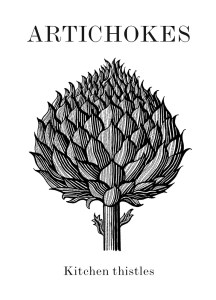
From Cooking by Jeremy Lee. Drawing by John Broadley
Lee’s father was an artist at the Scottish media company D.C. Thompson. ‘He was quite senior,’ says Lee, ‘so he could work at home. There were drawing boards everywhere, stuff scattered all over the place. It was part of daily life.’ The influence of these creative surroundings can be felt not just in Lee’s plates of food, but also in the way he designs the whole experience of eating – from a small vase of delicately arranged flowers to the right cutlery and beautiful glasses. ‘The devil’s in the detail,’ says Lee.
Before he became a cook Lee had his sights set on art college. ‘I loathed school,’ he says. ‘I was not a model pupil compared to anyone in your imagination. So, when I came back from holiday, and discovered I’d got my Highers, everyone went, “Wow”, and I went, “Well, a bit of faith would go a long way.”’ To earn money for college, he got a job as a waiter in the old hotel down the road from where they lived. ‘I was such a rubbish waiter because all I would do is gossip and drop things,’ he says. ‘They ended up putting me in the kitchen, which shows you the degree of respect accorded to a chef back in the day.’ The three men who ran the hotel took Lee under their wing and sent him to Boodles in London to continue his apprenticeship. ‘I just moved forwards,’ says Lee.
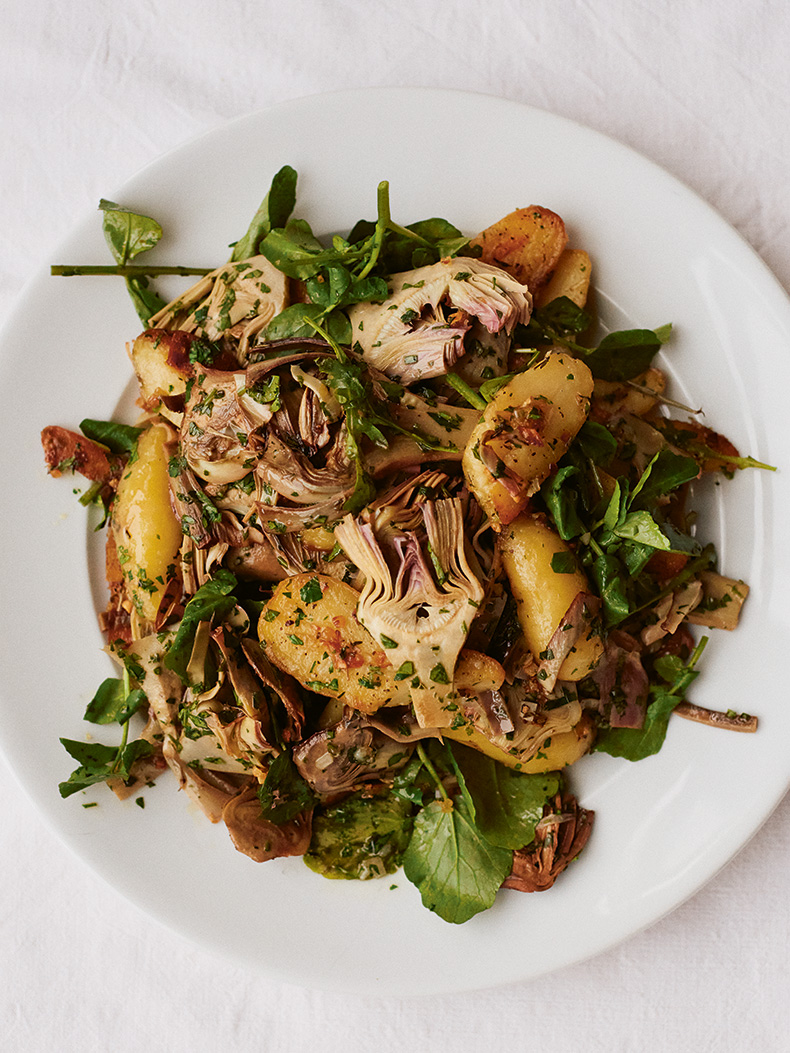
Potato and artichoke salad from Cooking. Simply and well, for one or many by Jeremy Lee. Photo: © Elena Heatherwick
‘Forwards’, for Lee, meant on to the invention of modern British food as we understand it. He worked with the late, great Alastair Little and with Simon Hopkinson at Bibendum in its heyday and then opened the Blueprint Café above the Design Museum for Terence Conran. He focussed on the very best ingredients, sourced as well as they could be and prepared in a way that was hospitable. When it comes to dinner parties, ‘the less formal the better’, Lee believes. ‘It’s about ‘cooking something that just delights, rather than getting yourself into a complete tizz with 12 immaculate dishes. A big pan of moules marinière or a big bowl of cock-a-leekie is just lovely – is just so much more. That was one of the big things that Alastair Little preached: what can you take away, rather than what can you add.’
His other great influences, beyond the chefs he worked with, are the women – for more often than not they were women – who wrote about food: Elizabeth David, Jane Grigson, Claudia Roden and Arabella Boxer. As Lee says, ‘What’s quickly forgotten is that food is ephemeral: it’s not like you can box something up and hang it on the wall to enjoy for the rest of your days; it is for that moment that you’re living it.’ The only way we have of catching these great traditions is through writing. There is no doubt that Cooking continues this tradition and captures a way of cooking, eating and living that many will hope to hold onto. While it is all about the way we eat now, it is also a ledger of memories and nearly forgotten pleasures, peppered with Lee’s tales of the Laigh Bakery and Coffee House in Edinburgh where politicos and artists used to gather for a coffee ‘and the considerable pile of shortbread sitting beside a bowl of whipped cream’ or reminders that ‘Salmagundy (aka sallet magundi, solomongundy or salmagundi) has as many variations in its spelling as it has ingredients and thus makes good use of an ashet [the old Scots word for a dish].’ Lee soothes the present by bringing the past almost within touching distance and there is something about this that is strangely exciting. No wonder Liz Truss didn’t want to go near Quo Vadis.
Cooking. Simply and well, for one or many by Jeremy Lee will be published by 4th Estate on September 1st.
Unlimited access from just $16 every 3 months
Subscribe to get unlimited and exclusive access to the top art stories, interviews and exhibition reviews.


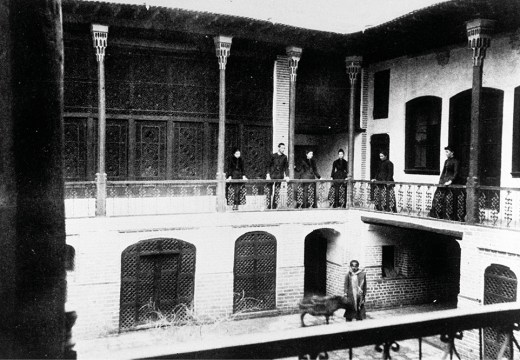
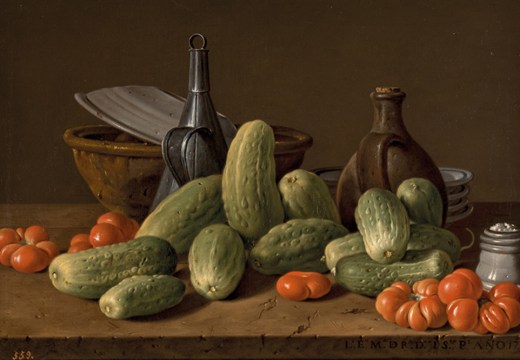
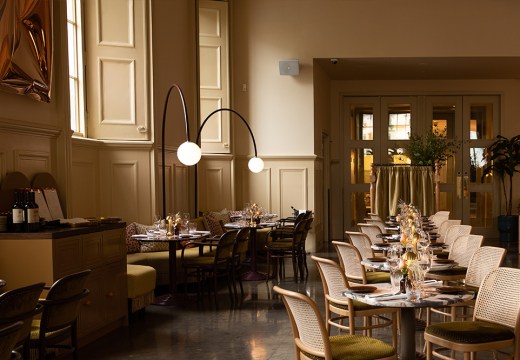









![Masterpiece [Re]discovery 2022. Photo: Ben Fisher Photography, courtesy of Masterpiece London](http://www.apollo-magazine.com/wp-content/uploads/2022/07/MPL2022_4263.jpg)
It’s time for the government of London to return to its rightful home